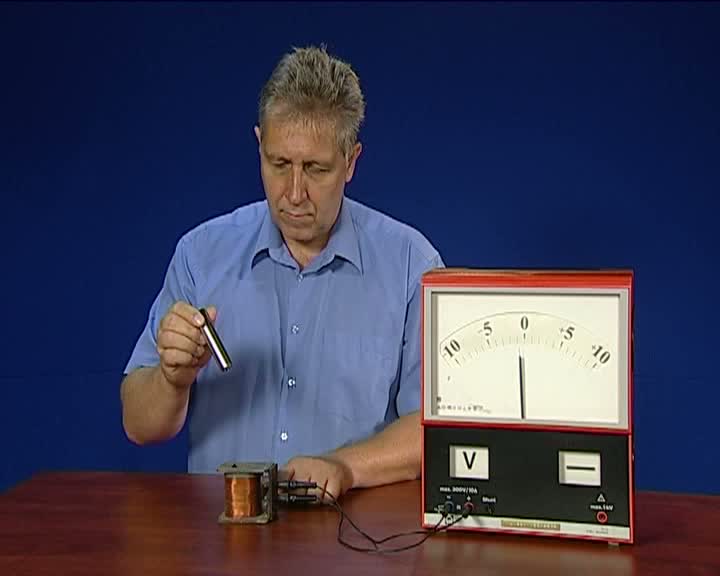Mágneses indukció VI.
Az elhangzó szöveg
Adott egy sokmenetű tekercs, végeivel egy voltmérőhöz csatlakoztatva. Egy erős rúdmágnessel elég közelíteni a tekercs tengelyéhez, hogy a műszer feszültséget jelezzen. A mágnes tekercsbe tolásának sebességével monoton nő a mért feszültség. Ugyanez igaz ellenkező polaritással a mágnes tekercsből történő kivételénél. Időben változatlan indukciófluxus zérus feszültséggel jár, legyen bármilyen nagy ez az időben állandó fluxus.
English text
Given a multithread reel connected to a voltmeter. It is sufficient to approach a strong magnet bar to the axis of the reel to produce voltage. If the magnet is pushed inside the reel the voltage is increasing and is portionally to its speed of the bar’s motion. The same holds with opposite polarity for pulling the bar out of the reel. A flux constatnt in time produces no voltage. No matter how big is the flux. Et us take a Helmholtz reel and connect it to an AC current source which produces a magnetic field varying in time. Let us first study a sinusoidal signal shown in the upper side of the oscilloscope. In the few thread reel place inside the Helmholtz reel voltage is induced which can be seen as the lower curve on the oscilloscope. Let us now study a triangular signal. It is easy to see that the voltage induced is always proportional to the time derivative of the generating current.
